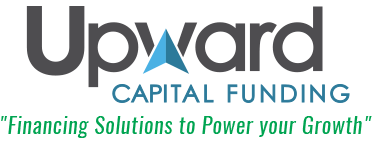How to Write a Loan Proposal
Approval of your loan request depends on how well you present yourself, your business and your financial needs to a lender. Remember, lenders want to make loans, but they must make loans they know will be repaid. The best way to improve your chances of obtaining a loan is to prepare a written proposal.
A good loan proposal will contain the following key elements:
General Information
- Business name, names of principals, social security number for each principal, and the business address.
- Purpose of the loan: exactly what the loan will be used for and why it is needed.
- Amount required: the exact amount you need to achieve your purpose.
Business Description
- History and nature of the business: details of what kind of business it is, its age, number of employees and current business assets.
- Ownership structure: details on your company’s legal structure.
Management Profile
Develop a short statement on each principal in your business; provide background, education, experience, skills, and accomplishments.
Market Information
Clearly define your company’s products as well as your markets. Identify your competition and explain how your business competes in the marketplace. Profile your customers and explain how your business can satisfy their needs.
Financial Information
- Financial statements: balance sheets and income statements for the past three years. If you are just starting out, provide projected balance sheets and income statements.
- Personal financial statements on yourself and other principal owners of the business.
- Collateral you would be willing to pledge as security for the loan.
How Your Loan Request Will Be Reviewed
When reviewing a loan request, the bank official is primarily concerned about repayment. To help determine this ability, many loan officers will order a copy of your business credit report from a credit-reporting agency. Therefore, you should work with these agencies to help them present an accurate picture of your business. Using the credit report and the information you have provided, the lending officer will consider the following issues:
- Have you invested savings or personal equity in your business totaling at least 25 to 50 percent of the loan you are requesting? (Remember, a lender or investor will not finance 100 percent of your business.)
- Do you have a sound record of credit-worthiness as indicated by your credit report, work history and letters of recommendation? This is very important.
- Do you have sufficient experience and training to operate a successful business?
- Have you prepared a loan proposal and business plan that demonstrate your understanding of and commitment to the success of the business?
- Does the business have sufficient cash flow to make the monthly payments on the amount of the loan request?
SBA Programs
The SBA offers a variety of financing options for small businesses. The SBA’s assistance usually is in the form of loan guarantees, – i.e., it guarantees loans made by banks and other private lenders to small business clients. Generally, the SBA can guarantee up to $3.75 million or 75 percent of the total loan value. The average size of an SBA-guaranteed loan is $368,737.
Whether you are looking for a long-term loan for machinery and equipment, a general working capital loan, a revolving line of credit, or a “microloan,” the SBA has a financing program to fit your needs.
Note: The SBA guaranteed more than 50,000 loans totaling $19.2 billion to America’s small businesses small businesses in fiscal year 2014 that otherwise would not have had such access to capital. It also provides assistance to small businesses and aspiring entrepreneurs through its Small Business Development Centers located throughout the United States and its territories.
The 7(a) Loan Guaranty Program, financing that can satisfy the requirements of almost any new or growing small business. The SBA offers a number of specialized loan and lender delivery programs.
- 7(a) Loan and 7(m) Microloan Programs
- CAPLines Program
- Export Working Capital and International Trade Loans
- Disaster Assistance Loans
- SBA Express
- Certified Development Company (CDC) 504 Loan Program
Borrowing Money
- It is often said that small business people have a difficult time borrowing money, but this is not necessarily true. Banks make money by lending money; however, the inexperience of many small business owners in financial matters often prompts banks to deny loan requests.
- Requesting a loan when you are not properly prepared sends a signal to your lender. That message is: “High Risk!” To be successful in obtaining a loan, you must be prepared and organized. You must know exactly how much money you need, why you need it, and how you will pay it back. You must be able to convince your lender that you are a good credit risk.
- Terms of loans may vary from lender to lender, but there are two basic types of loans: short-term and long-term.
- A short-term loan generally has a maturity date of one year. These include working capital loans, accounts receivable loans, and lines of credit.
- Long-term loans generally mature between one and seven years. Real estate and equipment loans are also considered long-term loans but may have a maturity date of up to 25 years. Long-term loans are used for major business expenses such as purchasing real estate and facilities, construction, durable equipment, furniture and fixtures, vehicles, etc.




